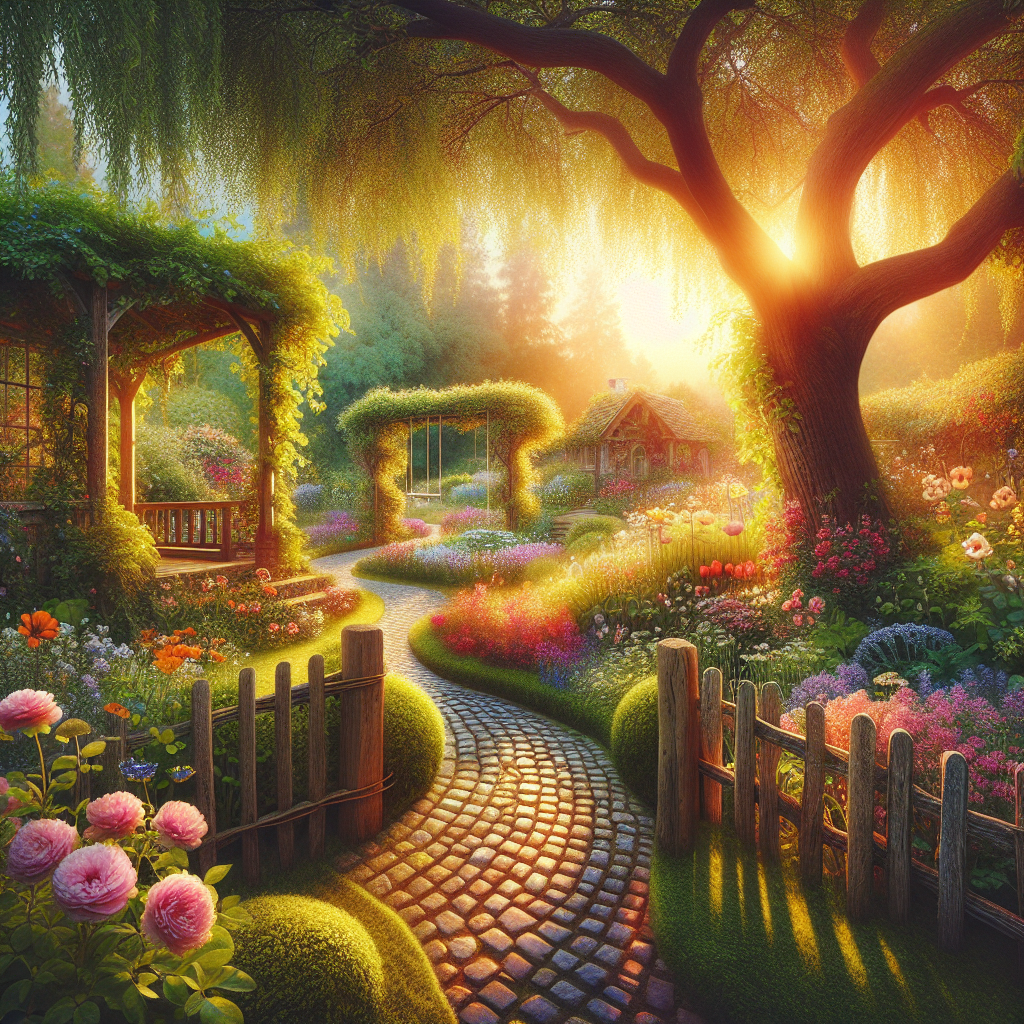Designing Your Dream Garden: Basics and Tips
Whether you’re carving out a space for a vibrant flower bed or dreaming of a serene green oasis, designing your dream garden is an adventure that begins with good planning. Gardening not only beautifies your space but can also provide a therapeutic sanctuary and even contribute to sustainability efforts. Here, we’ll explore how to bring your vision to life with practical basics and tips to transform your backyard into a blooming wonder.
Understanding Your Space
Before you dig into the soil, it’s essential to understand the canvas you’re working with. Examine the size of your garden, the type of soil you have, how much sunlight it receives, and the climate of your region. For an in-depth understanding, the United States Department of Agriculture’s Plant Hardiness Zone Map can guide you on what plants are most likely to thrive in your area.
Start with a Plan
Like any good design, a well-outlined plan ensures that your garden is not only aesthetically pleasing but also functional. Sketch out your garden on paper, or use one of the various garden planning apps available online. Remember to consider pathways, seating areas, and features like ponds or fire pits that you might want to include.
Picking the Right Plants
Choose plants that are suitable for your garden’s conditions. Native plants are often a wise choice as they are adapted to the local climate and soil conditions, requiring less water and care. The Xerces Society provides a fantastic resource for finding native plants that support pollinator health. Additionally, consider the height, spread, and color of plants to create visual interest and balance.
Soil Prep and Planting
Good soil is the backbone of any successful garden. Incorporate organic matter such as compost to improve soil texture and fertility. When planting, pay attention to how deep and far apart each plant should be; this information is typically found on plant tags or in planting guides.
For quality garden tools and supplies, you can check out Gardener’s Supply Company, which provides a comprehensive range suitable for novice and experienced gardeners alike.
Creating Paths and Borders
Paths not only facilitate movement but also define areas in your garden. When designing a path, consider the flow and how it will direct the viewer’s eye. Borders, whether created with plants, stones, or edged hardscape, give your garden a polished look and help contain different plantings.
Add Texture and Layers
Texture in a garden comes from the variety of plant shapes and foliage types. Play with the juxtaposition of fine, feathery plants against those with broad, bold leaves. Add layers through different plant heights, from low ground covers to eye-level blooms, to build a sense of fullness and depth.
Focal Points and Features
A garden should have focal points to draw interest. This could be a striking plant, a piece of sculpture, a beautiful tree, or even a colorful bench. Don’t forget to incorporate features such as bird baths or trellises, which can provide structure and support for climbing plants.
Watering and Maintenance Strategy
Develop a watering and maintenance plan that suits your schedule and the needs of your plants. Consider investing in a drip irrigation system to save time and ensure that your plants get the water they need.
Attracting Wildlife
If you wish to attract birds, butterflies, and beneficial insects, include a variety of plants that offer nectar, shelter, and food sources. Providing a water source, such as a small fountain or a birdbath, can also attract wildlife to your garden.
Sustainability Practices
Embrace sustainable gardening practices by avoiding chemical pesticides and fertilizers. Opt for organic alternatives or use natural predators like ladybugs to control pest populations. Collecting rainwater and choosing drought-resistant plants are additional steps towards an eco-friendly garden.
The Finishing Touches
Once your plants are established, add the finishing touches with mulch to conserve moisture and reduce weeds. Decorative elements like solar-powered garden lights or a unique wind chime can enhance the ambiance of your garden during the evenings.
Conclusion
Designing your dream garden is a rewarding journey that combines creativity with nature. Take your time to plan, choose the right plants, and accessorize thoughtfully. With these basics and tips, turning your backyard into a blossoming retreat is within reach.
Remember, gardening is a dynamic process; plants grow, tastes evolve, and new inspirations emerge. Don’t be afraid to adjust your design as you cultivate your dream garden – after all, a garden is a living work of art that reflects its creator’s care and passion. Let your garden be a testament to your dedication and a place of joy for years to come.
Ready to get started on your garden? Share your experiences or questions in the comments below, and let’s grow together in creating spaces that bring beauty and serenity to our homes and communities.


